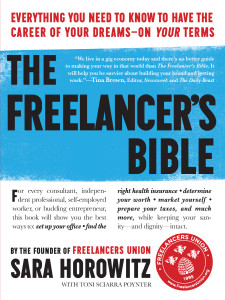I’m a big fan of public libraries. The sheer amount of time I’ve spent in libraries (including those I didn’t actually have a card for) makes every library feel a little like home.
While I love wandering through the stacks, I’m comfortable with how the best libraries firmly embrace technology. As long as there is still a librarian around who can direct me to the next great novel I need to read or tell me how to find that incredibly obscure fact I need for an article, I don’t care if that librarian points me to an ebook, a website or a physical book. That’s because one of the greatest values librarians provide is that of curation — without an expert, it’s hard to navigate the giant piles of both data and stories the human race has managed to produce. In fact, my experience of wandering the stacks is not universal: many libraries require readers to request a book from a librarian or through an automated system. That in turn means that readers must know what books they need, which makes curation ever more necessary.
With that in mind, there seems to be an opportunity for libraries to take their position as curators a step further: why don’t libraries publish ebooks?
I don’t mean actually printing books, mind you. I’m talking about finding material, editing it and releasing it online in a digital format. Libraries can act as small presses, releasing publications only in electronic formats.
Let’s Talk Problems First
I pitched the idea to a friend of mine who is a librarian and the whole conversation got pretty excited very quickly — the idea has a lot of appeal, at least to those of us who nerd out on information sciences. We did manage to make a couple of passes at what the big problems are going to be for the average library considering whether to start publishing ebooks.
On the most basic level, resources are always a problem. Libraries are typically non-profits or governmental departments. As organizations, libraries aren’t exactly known for having giant piles of cash to throw at experiments. Many libraries have a hard time keeping the doors open. In theory, at least, publishing some ebooks could bring in revenue for a library, but building that revenue stream is going to take upfront investment, at least of time.
I’d like to say that running an ebook publishing house — especially at the small press level — is easy enough to do. After all, I’ve published a stack of ebooks without any special training. But while it’s easy to get started publishing online these days, it’s also incredibly easy to get into trouble. Copyright law, for instance, is so arcane that most people just throw up their hands, rather than trying to figure out how it works. The average small library isn’t going to have an intellectual property lawyer on staff and also lacks the resources necessary to handle any sort of copyright lawsuit.
But these seem to be the biggest problems that a library interested in publishing ebooks faces. They’re at least as manageable as raising the funds for new buildings, which libraries have to do on a somewhat routine basis.
Libraries Can Win at the Publishing Game
The average library actually has some resources that put such institutions ahead of typical self-publishers, if not many small presses.
The biggest asset most libraries possess is that they already employ librarians — a class of workers who absolutely have to be tech-savvy to hold a job. The need for technology is not something new for librarians: my grandmother was one of the first people I knew who had an email address, because she had to have one in the early Nineties as part of her job as a university librarian.
Digitizing records (a routine process in many libraries) requires many of the same skills as setting up an ebook. Anyone who can handle the necessary technology to operate a local library is going to be able to learn at least the basics of publishing ebooks online.
Digitization represents an additional benefit: any organization that bothers with making electronic copies of paper documents (and other non-digital records) sees at least some demand for those records. The typical library owns collections of materials that people are interested in accessing, such as family history records and local information, as well as the personal papers of local notables and other documents that sneek into the backrooms of any such institution. Just creating ebook versions of such records could at least support the necessary efforts to preserve such documents. Given the people willing to pay to travel to the areas their families once lived in, I can’t imagine that family tree researchers wouldn’t be willing to pay for curated local records in digital format, especially if they can’t travel to the library in question.
Build From the Local Community
My local library district offers books and other media. But the individual libraries are also crucial parts of the community because they have meeting spaces and even arrange for certain types of experts to speak. That sort of tie makes the idea of ebook publishing even more appealing, at least in my mind.
Having community ties means that a library has supporters it can rely on for the funds and volunteer power necessary to build a publishing program, as well as a built-in audience that may want to purchase ebooks (rather than just checking them out temporarily from the library). But given that many writers’ groups meet at their local libraries, there’s a lot more opportunity there: libraries can work to curate the local writing available, helping the community publish its own works and accessing writing with a local bent.
Local authors always need evangelists, like the librarian or bookstore owner willing to take the time to set up a ‘local author’ display. Librarians can be champions for their communities on a whole new level in this little thought experiment. On a certain level, the idea of libraries publishing ebooks makes me think of the monastaries that housed libraries and scriptoriums before printing presses made wide-spread publishing an option. Librarians in those days might have effectively decided what books would continue to exist by choosing which would be copied. They curated the information important enough to be preserved for their communities. Today, just about any piece of information can make it into a format where it will be preserved, but we need curators to decide which pieces are important enough to be read — a purpose that libraries are uniquely suited for.
What Libraries Need to Get Started Publishing
Libraries, as a general rule, have some sort of fundraising mechanism already in place. There are similar systems for finding volunteers. I’m not going to suggest reinventing those particular wheels.
But there are some specific resources that the average library will need to recruit. These could be resources that the libraries in question pay for or they could be provided by volunteers.
- A graphic designer: While it’s possible to format and publish an ebook with nothing more than the word processing program already on your computer, it’s always easier to sell an attractive package.
- A copyright expert: Just having someone review proposed book contents to make sure that a library has the right to publish the necessary material will save a whole lot of trouble. I don’t know how in-depth that process needs to be; it would be nice to have an intellectual property lawyer weigh in on the question.
- A commitment to some specific ebook formats: Ebook publishers spend a lot of time chasing each other’s tails on what formats to publish in. I’m not prepared to make that sort of decision for anyone, but I’m personally banking on Kindle and PDF for most projects.
- Marketing help: This one is probably the toughest. Libraries have great local audiences, but promoting anything beyond those nearby groups will be hard. If the money’s available, spending some on marketing help is going to be one of the most useful investments.
I could see a startup or even a non-profit creating a turn-key solution for libraries interested in publishing their own ebooks (if you decide this is an idea you want to pursue, email me so I can introduce you to my librarian friends). I could also easily see a few consultants popping up who offer to parachute in and teach a ‘publishing for librarians’ program (ditto).
Personally, there’s a whole stack of books my library could publish that I’d be happy to slap down some virtual dollars for. I’d love to be able to support local authors and local libraries at the same time. I’d like to think that people who don’t spend quite as much time in libraries as I do would be willing to do the same.
Image by Flickr user Saint Louis University






